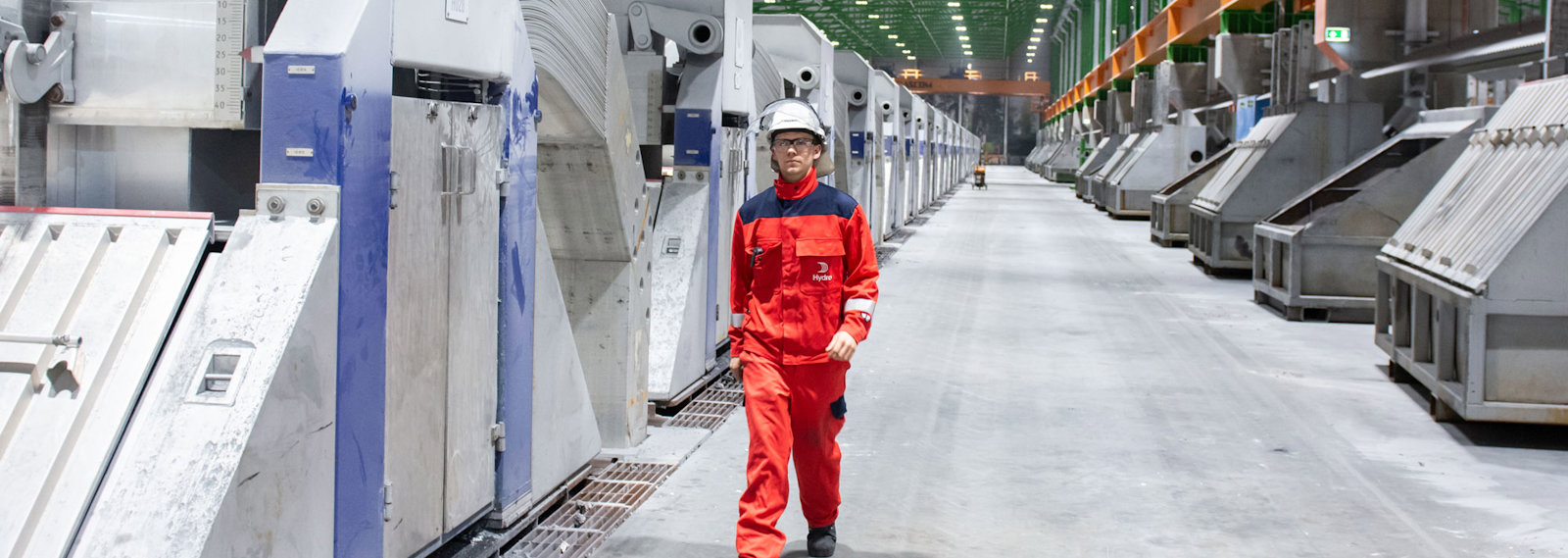Karmøy Technology Pilot lives up to ‘greener’ expectations
When the Karmøy Technology Pilot, a groundbreaking primary aluminium project in western Norway, opened with much fanfare in 2018, we knew it would be a pioneer in low carbon emissions. But it turned out to be much more.
One of the benefits of the pilot is that the new technology employed there would be transferred to other Hydro aluminium plants. The plant at Husnes, in western Norway, is a good example.
One production line representing half of the Husnes plant’s capacity was idled a decade ago in the wake of the global financial crisis. Now, in November 2020, that line is to resume production – with technology from the Karmøy tech pilot.
The Husnes plant will be using the world's most energy- and climate-efficient technology for producing aluminium.
“Husnes is among the most climate-efficient aluminium plants in the world, producing a material acknowledged by the European Union as an essential building block for the low-carbon, circular society,” says President and CEO Hilde Merete Aasheim.
The cutting-edge technology can decrease electricity consumption – and so CO2 emissions – to new lows.
This in itself is newsworthy. But what a lot of people don’t know about is all the other things that make the Karmøy plant a showcase for how an aluminium plant can be.
First, the plant was designed with an optimum layout for area efficiency and employee safety, including smart material flows and separation of vehicles and pedestrians.
Additionally, the construction project achieved a smaller environmental footprint by:
- Reuse of old buildings
- Reuse of demolished concrete
- Use of low-heat concrete and geopolymer concrete, both of which produce lower carbon emissions than traditional concrete
- Natural ventilation, reducing electricity consumption
- LED lighting, reducing electricity consumption.
When it comes to climate challenges, it is about building smart.
Measures made by Hydro Projects at the Karmøy Technology Pilot such as building area-efficiently, rebuilding rather than building new, reusing and recycling are all important measures that the EU's new climate plan for the next decade will focus on.
The use of geopolymer to replace concrete was promising enough that Hydro is planning to participate in a pilot project to see if this material can be used elsewhere in Hydro in particular and in other industrial applications in Norway.
Geopolymer has a much smaller carbon footprint than traditional concrete – up 80% lower emissions in the production phase – and is currently used in Australia and the U.S. It has good resistance to heat and fire as well as to electrical conductivity. These qualities make it ideal for use in the electrolysis cell areas of the plant. Geopolymer is made with by-products of industrial processes – like fly ash, though groups are investigating whether red mud, a by-product of bauxite mining in Brazil, can also be used.
In the future, many of these actions can be implemented in new plants and upgrades, increasing Hydro’s environmental performance.
See also Hydro Karmøy Technology Pilot successfully verified (December 21, 2020)







